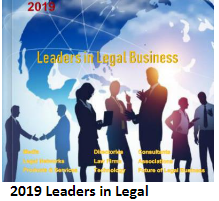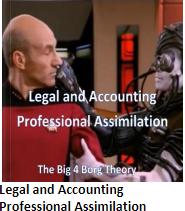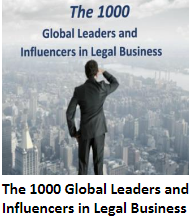For
the past five decades, law firms as well as accounting firms have tried to
achieve broader coverage and obtain referrals through establishing and joining
networks and associations of professional firms. The prevailing legal
structures are mainly companies limited by guarantee, Delaware member
corporations, and Swiss Vereins.[1]
The
collapse of Italian dairy product giant Parmalat and the Enron case led to a
restructuring of the regulatory framework for accounting Transnational
Organisations and Practices (TOPS), resulting in higher regulation through the
8th EU Directive and the Statutory Audit Directive from 2006 as well as in the
commonly accepted network definitions according to the International Federation
of Accountants (IFAC). Consequently, there needs to be a differentiation
between integrated networks of accounting firms and loose networks of
accounting firms referred to as “alliances” or “associations,” regardless of
their effective legal structure. Integrated networks of accounting firms
require thorough independence checks prior to accepting new clients and are
potentially exposed to more vicarious liability.[2]
Organisations
consisting purely of law firms enjoy much more flexibility and are not yet
subject to global regulations, restrictions, or limitations. It is unavoidable
that potential conflicts arise from the different corporate structures chosen;
in particular, conflicts of interest can even lead to malpractice suits against
law firms, members of TOPS. The choice of the legal structure has, however,
very little impact on vicarious liability for law firm networks. A substantial
conflict can be identified by the market perception of clients and by elements
of misrepresentation, in particular if networks of law firms label themselves
as global law firms when in fact they are Swiss Vereins and therefore factually
single-branded networks of independent firms.[3]
A series of law firm networks may promote themselves as global law firms and be
perceived as such, despite their structure as a Swiss Verein.[4]
Professional
service firms have over the past century cooperated on an international scale
in different ways. Similar to the correspondent bank network of the 19th
century, international law firms and accounting firms have come to understand
that it is essential for them to rely on strategic partners or associates
abroad in order to serve clients better, particularly when it comes to
transnational assignments.[5]
Historically, a broad variety of different models has arisen, from very loose
“clubs of friends” with no formal corporate structure to the more modern and
often highly integrated and monitored firm model, using a single brand and
following global standards, such as the “Big Four.”
The differentiation between
accounting networks or alliances and their corresponding legal networks has
initially been very easy; however, as a consequence of the Parmalat case and of
a series of legal and regulatory alterations, governance and regulations
changed considerably for accounting networks and associations, while they did
not for the legal profession. The origin of accounting networks can be found in
the need for listed U.S. companies to be audited in order to comply with the
regulations of the Securities Exchange Commission (SEC).[6]
Law firm networks began to
internationalise much later than the accounting profession,[7]
since their clients’ needs differ from those of accounting firms. The latter
had to be able to conduct standardised audits globally to comply with
consolidated reporting for their nationally regulated clients. Law firms,
however, could rely on vetted correspondent firms if and when a matter involved
another jurisdiction. After the Second World War, law firms followed U.S.
clients in particular, who began to expand abroad as a result of increased
internationalisation, consequently referred to as “globalisation.”[8]
The global or multijurisdictional
aspect of organisations of professional firms allowed loopholes and a
flexibility in the structure and running of transnational organisations of
professional firms. Bad governance together with poor financial reporting led
to the Enron collapse and the introduction of Sarbanes-Oxley.[9]
The Parmalat case triggered at the EU level the introduction of the Statutory
Audit Directives and a regulatory change regarding transnational networks of
accounting firms.
These regulatory changes have also
led to the clear differentiation between “networks” and “associations” for
transnational accounting organisations as defined in the EU Statutory Audit
Directive[10]
and the derived IFAC definition. According to the IFAC Code of Ethics 290.17,
the determination should be “made in light of whether a reasonable and informed
third party would be likely to conclude … that a network exists.” A referral
network is not a network by this definition. The shared costs must be
significant. Common quality control systems and business strategies are
important considerations.
This differentiation between network
and association materialises in the level of potential vicarious liability and
in a more stringent regulatory framework, with, for example, the requirement
for the formal registration of networks with the national regulatory or
supervisory body, clear conflict checks, and ultimately a formal or perceived
proximity between the individual affiliated member firms. Where, for instance,
the use of a common brand and coordinated or monitored management and control
can be identified, the acknowledgement of an agent structure can be positive.
The member firm agreement, reserved ownership of IP regarding manuals and
software, and a centralised implementation of quality control and training
programmes are clear indicators of the existence of an integrated network.
Therefore, the network definition
represents an additional layer of liability for accounting firms organised as
members in a transnational entity, regardless of the legal structure this
entity has chosen. Depending on the jurisdiction, this can result in a piercing
of the corporate veil.[11]
Managed organisations of professional
service firms are incorporated under the laws of a wide variety of countries;
however, the main legal structures are common law companies limited by
guarantee, Delaware non-stock member corporations and Swiss Vereins. Network organisations
are defined mostly by their purpose, structure, and process. This chapter will
include multidisciplinary organisations, i.e., networks or alliances including
both law firms and accounting firms.
The striking differences between
networks in a generic sense and transnational partnerships cannot necessarily
be found by looking at their legal and operational structure. The aim of most
transnational organisations is to have a broad or at least strategic coverage
and to be perceived as such while vicarious liability and burdensome regulatory
matters should be mitigated.
Regulatory matters have thus changed
the concept of independence checks and vicarious liability for global
accounting organisations or multidisciplinary organisations consisting of both
accounting firms and law firms. Networks of law firms, however, do not face the
same degree of regulation and are much more flexible. In both the accounting
and the law firm cases, this is regardless of the structure or legal entity
chosen. The reason therefore is mainly because law firm networks are regulated
by ethics and not by any governmental agencies, while accounting firm networks
and associations are regulated in accordance with national or supranational
laws. The fact that accounting firm networks were established out of a
transnational need based on reporting requirements and securities laws of
individual member firms also underlines the different scope and the public
interest character of these entities. Transnational accounting networks and
associations are usually not directly affected by national regulations; they
are affected when their individual members do not comply with them.
Some law firm networks have in the
past five years benefitted from a less regulated environment compared to the
accounting profession. This explains why some law firm networks consisting of
independent member firms organised or bundled in, for example, a Swiss Verein
appear to the clients as global firms when in fact they are not.[12]
In the United States, the alleged cases of conflicts of interest of Norton Rose
Fulbright[13]
and Dentons,[14]
both organised as Swiss Vereins, underline the problem of alleged appearance of
impropriety.
Multidisciplinary networks and associations
are basically those organisations, or TOPS, that consist of both law firms and
accounting firms, together as member firms of the coordinating entity.
Multidisciplinarity exists in some countries on a national level. It is common
practice, for example, to find in Germany or in Italy professional service
firms consisting of both statutory auditors and lawyers admitted to the bar.
Commonly, the most prominent level 4
networks, the “Big Four,” are identified as accounting firms or accounting firm
networks; however, they comprise considerable numbers of lawyers and are
therefore also ranked as leading law firms in several countries, for example in
Spain.
When accounting firm networks
expanded their reach by also adding legal services, there was initially much
controversy.[15]
The dissolution of Arthur Andersen after the Enron scandal seemed to
temporarily put an end to the multidisciplinary ambitions of the large
accounting TOPS, but the fact is that, today, the “Big Four” comprise large
single-branded law firm networks in each of their organisations outside of the
United States, since the Sarbanes-Oxley Act does not prevent them from
providing non-audit and non-accounting services outside of the United States.[16]
Today, the multidisciplinary
structure of the “Big Four” is evident: PwC comprises more than 2,500 lawyers
in 85 countries; KPMG Legal counts more than 1,200 lawyers in more than 50
jurisdictions; Deloitte’s legal network employs more than 1,700 lawyers in 73
countries; and EY comprises more than 1,800 lawyers in 75 countries.
Professional magazines such as the
IAB (International Accounting Bulletin)
usually take into account in their rankings the total revenue of accounting
networks like the “Big Four,” and this also includes the revenue generated by
their law firm departments. Multidisciplinary associations of independent firms
like GGI Geneva Group International, MSI Global Alliance, and Alliott Group are
obliged to exclude the revenue generated by law firms affiliated to their
organisation for the global rankings.[17]
Generally, multidisciplinary
networks or associations are considered networks or associations of accounting
firms for regulatory purposes.
Conclusions
The legal profession and the accounting profession cannot be compared without stressing the clear and evident differences. Both professions are consultants or advisors in the broader sense to their clients. Disciplines cannot strictly be separated, and blurred lines between tax advice, legal advice, transactional services, consulting, or trust services are part of the daily reality of dozens of the leading networks or associations of law firms and accounting firms. Multidisciplinarity therefore also exists in networks or associations apparently being dedicated to only one discipline. The commonalities are differentiated by the very nature of the professions. Law firms employ solicitors eventually pleading in court, admitted to bars and subject to ethical standards of their respective national or state bars. Clients benefit from a series of long-established principles, such as privilege, but also the essential factor of independence. The nature of the legal business is not as recurring and perpetual as that of an accounting firm.
Accounting firms need to ensure independence
when it comes to audits of their clients.[18]
Statutes have led accounting firms organised in networks or associations to
choose which type of transnational organisation they want to be affiliated
with, having to bear the consequences of, for example, additional global
independence checks in the case of being part of an integrated network.
Liability matters have evolved in the accounting profession over the last few
decades, leading from the unlimited liability of partnerships and their
partners to limited liability through the type of partnership chosen after the
1989 and 2006 U.K. Companies Acts.
The 8th EU Company Law Directive on the
Statutory Audit, Directive 2006/43/EC ensures a more accurate view of the
transnational networks and associations of accounting firms but also of TOPS.
Ultimately, the expectations of clients of accounting firms and third parties
are the accuracy of the provided audit report, which leaves very little room
for interpretation, provided that the information submitted by the respective
company and its directors is accurate. On the other hand, legal representation
of course also needs to be handled with utmost professionalism, but the outcome
also is conditioned by a variety of external factors and is, alas, less of a
commodity. Nevertheless, the main pillars of the professions are the
independence for accountants and the lack of any conflicts of interest for
lawyers. Clients should be sure of the loyalty of lawyers — it is the most important of all
fiduciary duties the lawyer owes to his client.[19]
The legislator has tried to ensure that
accounting firm networks and associations are what they seem and no longer have
the potential to mislead clients by alleging a global presence as a
multinational group while in fact being a franchise or a loose cooperation of
independent legal entities owned by separate persons. The rationale of
regulation is embedded in the public interest, in particular, in audits of
public companies. The potential damage a law firm or a law firm network could
cause to a client is not fully perceived.
The financial collapse of a public company because
of poor audit services without a doubt would have a major impact, but the
collapse of a global law firm or a single branded global law firm network would
certainly have a severe negative impact on their clients, too. The question of
whether a global law firm is a safer option than a network of independent firms
cannot clearly be answered, as the totality of the needs of a client must be
taken into consideration — if there are ongoing mandates, specific ones, in various jurisdictions,
in specific disciplines or just randomly. It is, however, alarming that the
Swiss Verein law firm imbroglio has systematically evolved over the past
decades, starting with the inclusion of Swiss Vereins in law firm rankings.
Several cases of conflicts of interest
underline the considerable lack of care and disregard of client loyalty; future
ones should be addressed and sanctioned accordingly. The accounting profession
has found a potentially viable way forward with the “network” definition and
therefore an approach that better safeguards concepts of independence and
ultimately the necessary ethical standards of a sophisticated and regulated
profession. The lack of uniformity in the detailed application of the
regulations for the accounting profession, for example throughout the different
countries of the EU, however, weakens to a certain extent this achievement.
Vicarious liability, a specific concept of
tort, is an essential doctrine beyond the borders of common law. The necessary
clarity cannot be found in recent case law. There is a tendency that law firm
networks opt for the Swiss Verein, while accounting firm networks and
associations avoid this structure and currently prefer companies limited by
guarantee.
Whatever the choice of corporate structure for networks, associations, or TOPS, whether it is a law firm, accounting firm, or multidisciplinary organisation, both statute and ethical principles and regulations should supersede corporate veils,[20] national borders, and potential loopholes to ensure that auditor independence, client loyalty, duty of care, privilege, and strict avoidance of conflict of interest prevail. This should be ensured for the benefit of clients and consumers, regardless if an organisation is multidisciplinary or not.
[1] Douglas R. Richmond
& Matthew K. Corbin, Professional
Responsibility and Liability Aspects of Vereins,
the
Swiss Army Knife of Global Law Firm Combinations, 88 St. John’s L. Rev. 917 (2014).
[2] BDO Seidman, LLP, v.
Banco Espirito Santo International, etc., et al., Nos. 3D09-324, 09-
197, 07-2746, 07-2472 (2010).
[3] Baker &
McKenzie (numerous national partnerships); Dentons (Canadian, Chinese,
European, U.K. and U.S. partnerships); DLA Piper (U.S. and international partnerships);
Hogan Lovells (U.S. and international partnerships); King & Wood Mallesons
(Australian, Chinese, Hong Kong, and European partnerships); Norton Rose
Fulbright (U.S. and international partnerships); and Squire Patton Boggs (U.S.,
U.K., and Australian partnerships).
[4] Peter Kalis, Grand Illusion, American Lawyer (May 2011), https://www.law.com/americanlawyer/almID/1202490654307/.
[5] Marshall Van
Alstyne, The State of Network
Organizations: A Survey of Three Frameworks (1996), and his citations,
J. of Org. Computing 1: “Sociologists argue that
social patterns of human interaction transcend reductionist economic agendas: ‘The
pursuit of economic goals is typically accompanied by [such] noneconomic
[goals] as sociability, approval, status, and power... Economic action is
socially situated and cannot be explained by reference to individual motives
alone,’” citing M. Granovetter, Problems
of Explanation in Economic Sociology in Networks
and Organizations: Structure, Form and Action 471-491 (N. Nohria & Robert
G. Eccles, eds., Harvard Business School Press 1992).
[6] M. Barrett et
al., Globalization and the Coordinating
of Work in Multinational Audits, 30 Acct.,
Orgs. and Soc’y 1 (2005).
[7] Richard L. Abel,
Transnational Law Practice, 44 Case W. Res. L. Rev. 737 (1994).
[8] James R.
Faulconbridge et al., Global Law Firms:
Globalization and Organizational Spaces of Cross-Border Legal Work, 28 N.W. J. of Int’l L. & Bus. 455
(Spring 2008).
[9] The Sarbanes-Oxley
Act of 2002 (Pub.L. 107–204, 116 Stat. 745, enacted July 30, 2002), also known
as the Public Company Accounting Reform and Investor Protection Act in the U.S.
Senate, commonly called Sarbanes-Oxley, Sarbox, or SOX, is a United States
federal law that set new or expanded requirements for all U.S. public company
boards, management, and public accounting firms.
[10] Directive 2006/43/EC: “‘[N]etwork’ means the larger structure: which is
aimed at cooperation and to which a statutory auditor or an audit firm belongs;
and which is clearly aimed at profit- or cost-sharing or shares common
ownership, control or management, common quality control policies and
procedures, a common business strategy, the use of a common brand name or a
significant part of professional resources…” available at
[11] Gutierrez v. Cayman
Islands Firm of Deloitte Touche, 100 S.W. 3d 261 (Tex. App. 2002); see also Deloitte & Touche
Netherlands Antilles & Aruba v. Ulrich 172 SW 3d 255 (Tex. App. 2005).
[12] Michael Siebold, Are Global Law Firms Networks in Disguise?
The Lawyer (Jan. 25, 2016), http://www.thelawyer.com/are-global-law-firms-networks-in-disguise.
[13] John Wayne
Enterprises, LLC v. Duke University, et al, No 14 Civ. 1020 (CD Cal).
[14] RevoLaze LLP v.
Dentons U.S. LLP, Ohio Ct. Common Pleas, Cuyahoga Cnty., No. CV 16 861410
(2016).
[15] Stephen McGarry,
Multidisciplinary Practices and
Partnerships, American Lawyer Media
(2002); see also C. Hancock, Masters of the Universe. A New World Order in Accounting and
Consulting (Lafferty Publications Ltd., 1998); see also Benito Arruñada, Non-Audit Services: Let an Informed Market
Decide, 4 Acct. 63 (1998).
[16] William Villanueva
v. United States Department of Labor, No 12–60122 (2014).
[17] World Survey: Strong Performance in Tough Conditions, 557 Int’l Acct. Bull.
(Feb 2016).
[18] See, e.g., in the U.K.: APB
ES (Ethical Standard) 1, produced by the Auditing Practices Board, part of the
Financial Reporting Council (FRC). The FRC regulates and oversees the
accountancy profession in the U.K. It is responsible for the implementation of
codes and standards to which auditors in the U.K. adhere. The EU Statutory
Audit Directives are implemented mainly by the Companies Act 2006 and the
Statutory Auditors and Third Country Auditors Regulations 2007.
[19] Lawrence Fox, The Gang of Thirty-Three: Taking the
Wrecking Ball to Client Loyalty, 121 Yale
L. J. (2012); see also
Strickland v. Washington, 466 U.S. 668, 692 (1984).
[20] Lorraine Talbot, Critical Company Law 49 (Routledge-Cavendish, 2016): “Misuse of the corporate veil has
the most pernicious consequences for society in the context of businesses that
have been organized as groups of companies. Groups of companies can be used,
inter alia, to avoid liabilities arising from the injury to persons, damage to
the environment or to avoid tax.”

 Software
Software Law
Law Legal
Legal






